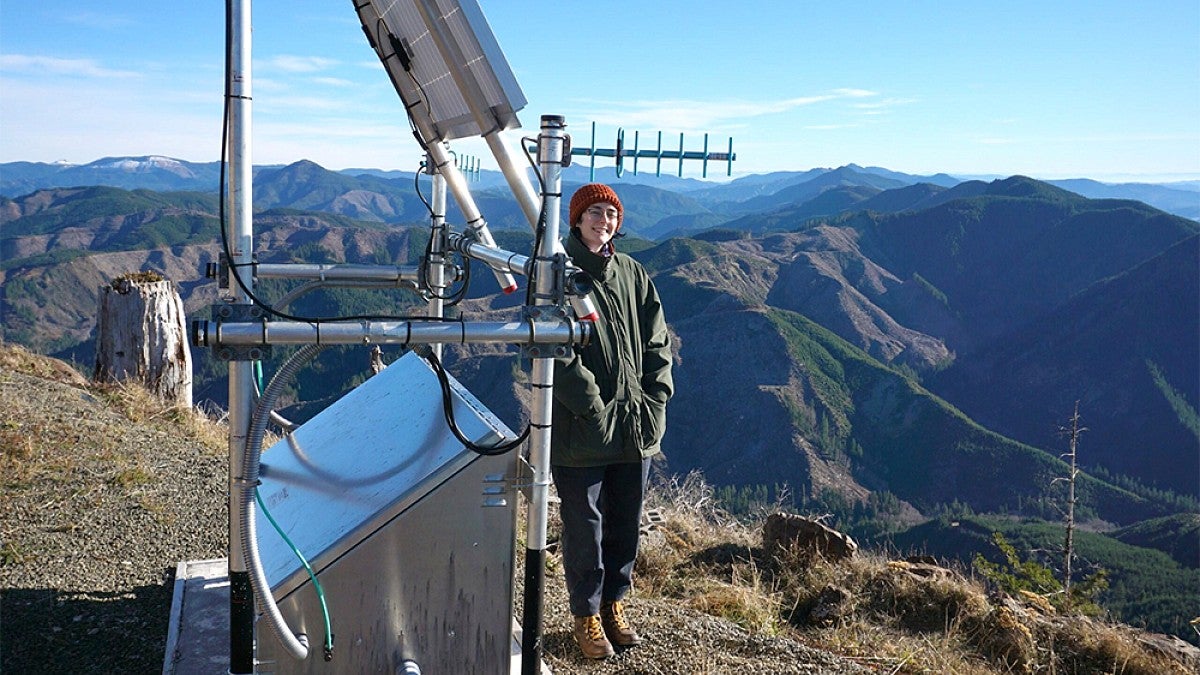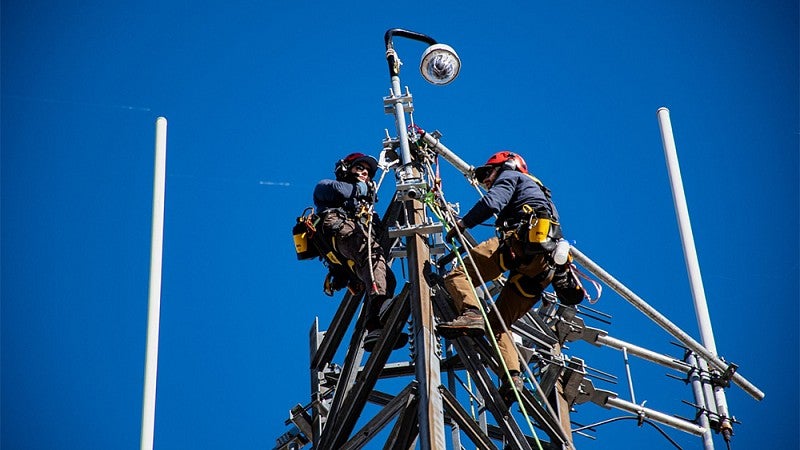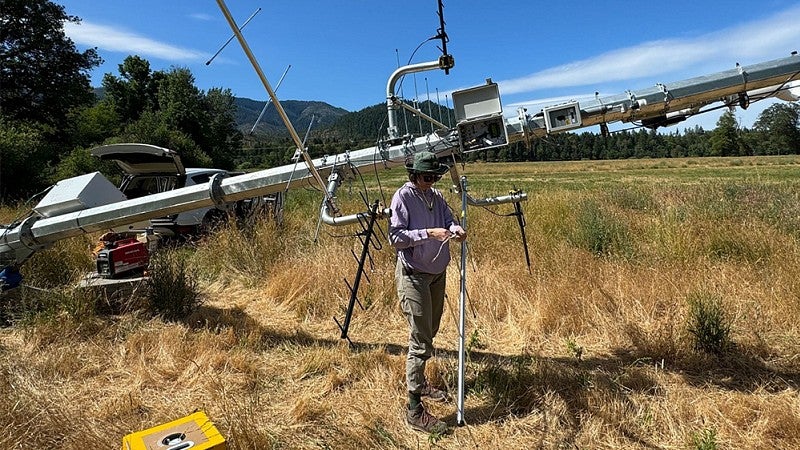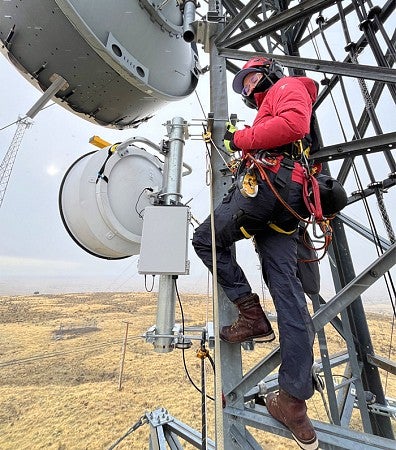
Experiential Learning | Research & Innovation | Community Impact | Career Preparation | Teaching Excellence | 21st Century Liberal Arts | Building Community | Good Vibes | CAS Spotlights | All Stories | Past Issues

Building Hazard Resistance
BY BAILEY MEYERS
APRIL 7, 2025
Whether she’s scaling 150-foot towers or testifying before legislators, Sydney Whiting is helping to revolutionize wildfire and earthquake detection in Oregon.
As a field technician for the Oregon Hazards Lab (OHAZ), the College of Arts and Sciences alum installs and maintains the seismic sensors, network infrastructure and cameras that provide real-time hazard monitoring throughout the state, giving firefighters and communities a crucial tool when responding to wildfires and earthquakes.
“There will continue to be fires, so it’s important to catch them on camera,” Whiting says. “The cameras are important because they give first responders and the public more information to be more prepared.”

The instruments Whiting installs collect crucial data to help advance knowledge of natural disasters and the environment; protect the public through real-time alerting; and contribute to community-level resilience.
Whiting started working with OHAZ, which is part of the CAS's Department of Earth Sciences, more than three years ago. She mentored fellow undergraduates as they spent their summers traveling around the state to install and maintain the lab’s vast regional network of wildfire detection cameras and seismic monitoring stations—an experiential learning opportunity OHAZ director and Earth sciences Professor Doug Toomey calls a “win-win.”
“I was excited to be able to install equipment that helps scientists and the public,” Whiting says.
For Whiting, the student job turned into full-time employment. After graduating last spring with a double major in Earth sciences and data science, she stayed on with OHAZ as a field technician.
“Sydney has contributed as a valued member of our field team, a leader of our undergraduate program and an outstanding spokesperson for our work,” Toomey says.

OHAZ collaborates with the University of Nevada, Reno and the University of California, San Diego to operate the world’s largest public-facing wildfire camera network, allowing firefighters and the general public to spot and confirm new fires while monitoring fire behavior and weather patterns in real time. OHAZ also collaborates with the University of Washington and the US Geological Survey to operate the Pacific Northwest Seismic Network, which contributes essential data to ShakeAlert, the west-coast wide earthquake early warning system.
Because the cameras are typically installed on tall mountains or buildings to provide a 360-degree view of the surrounding area, Whiting's job sometimes involves climbing 150-foot communications towers. But skills such as public speaking, problem solving and working well on a team have been just as important as her technical skills, she says.

“Problem-solving effectively is just as important as knowing how to use a drill,” she adds.
OHAZ also partners with both public and private stakeholders, including policymakers, to advocate for building resilience against the increasingly destructive wildfires that continue to plague the Pacific Northwest. In December, Whiting testified alongside Toomey at the Oregon Legislature, where they shared with a Senate Subcommittee about how the wildfire camera and seismic networks are increasing societal resilience and preparedness.
“She knocked it out of the park,” Toomey says. “Clearly the legislators were impressed with her experience, and with her as a person.”
As wildfire seasons intensify, Whiting and the network she helps maintain will continue to play a crucial role in ensuring that both firefighters and communities have the tools they need to respond to fires swiftly and effectively.
